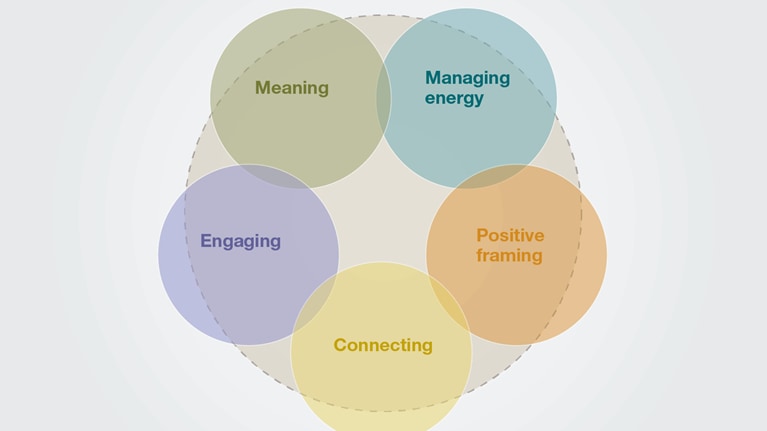Leaders who master the art of leading from their core— using several dimensions of the model we call “centered leadership”—are likelier than others to be passionate about their work, effective as leaders, and satisfied with their lives, according to a recent survey of more than 1,000 executives.1
Centered leadership, a leadership model developed by McKinsey over the past five years, comprises five broad dimensions: meaning, or finding your strengths and putting them to work in the service of a purpose that inspires you; positive framing, or adopting a more constructive way to view your world and handle situations, even very difficult ones; connecting, or building stronger support networks and increasing your sense of belonging; engaging, or crossing the line to pursue opportunities you might avoid because of inherent risks or personal fears; and managing energy, or practicing ways to sustain and renew your energy.2
In September 2008, as the financial crisis erupted, we surveyed nearly 2,000 executives—men and women—from around the world on how they use these five dimensions of leadership. We found that using each dimension was associated with higher levels of personal and professional satisfaction.3 The new survey, conducted after one year of economic upheaval, assesses the dimensions taken together and shows that they seem to multiply each other’s effectiveness: respondents’ self-reported passion for their work, their effectiveness as leaders, and their satisfaction in life all increase markedly as they practice more elements of centered leadership (exhibit). In addition, the fact that 81 percent of responses to the 2009 survey came from female leaders in financial services—the hardest-hit industry—suggests that leadership driven by building on one’s strengths, recognizing and using emotions (positive and negative), connectivity, and managing energy works even under the most trying circumstances.
Practicing all five dimensions of centered leadership appears to multiply the effectiveness of each.

Only five respondents to the survey scored themselves in the top percentiles on all five dimensions of centered leadership. This finding suggests that the vast majority of executives can build greater centered-leadership capabilities. And though we can’t prove cause and effect yet, the strong correlation between those capabilities and effectiveness and happiness of leaders is well worth taking into consideration.

